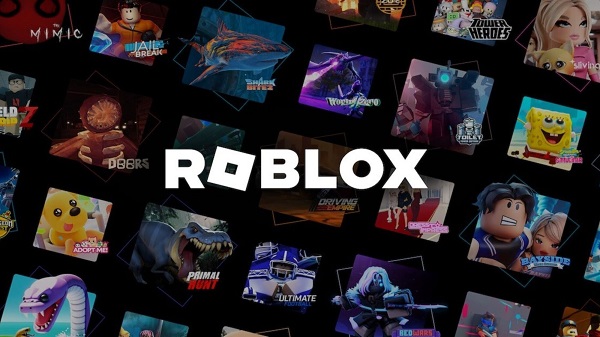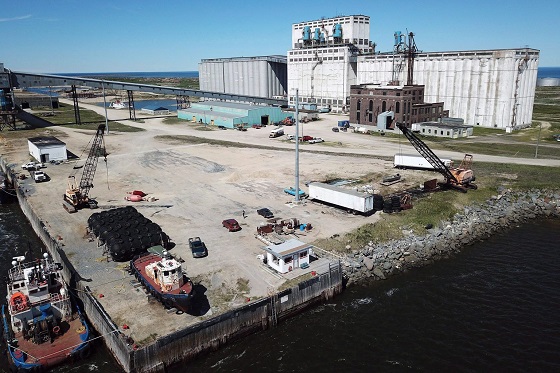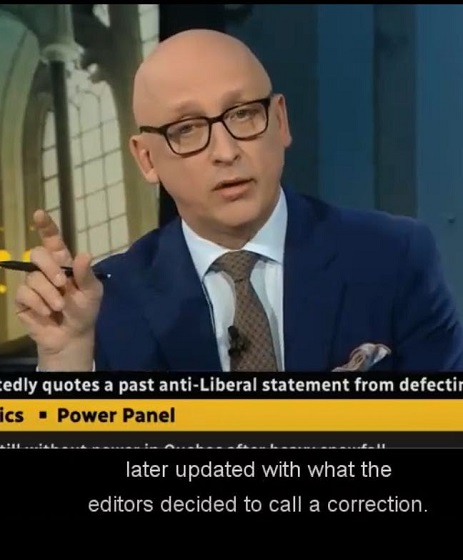Alberta
Summer Vacation Idea – Central Alberta’s collection of Train stations preserved along the Highway 56 Corridor

Article submitted by Paul O’Neil
For decades, the railroad station or “depot” was the transportation hub of many communities across North America. As the “storefront” for the railway company, the depot was the town’s gateway, handling express freight, serving travelers, and providing vital communication in an erathat is now almost forgotten. In Canada’s West, the remaining small-town depots that continue to exist are now museums, private businesses or residences, or in the worst cases have been left to deteriorate as hulks on private property.
There is however a special historical railway on the Prairies that has developed into a true “historic railway district”. A visit to the depots preserved by the Canadian Northern Society in Central Alberta provides a glimpse into the past – an entire collection of classic railroad station designs, carefully and lovingly maintained by a dedicated group of volunteers.

History Background:
Members of the Canadian Northern Society include historians, community volunteers, gardeners, and other local supporters who have since 1987 been active in the preservation of its namesake railway’s history, and in particular its depots. The Canadian Northern Railway (CNoR) traces its origins to Manitoba in 1896. Visionary founders Sir William Mackenzie and Sir Donald Mann – both instrumental as contractors in the completion of the Canadian Pacific Railway – grew the company from a modest short line between Gladstone and the Dauphin district of Manitoba into to a 9500 mile transcontinental system.
Despite the relative business success of the CNoR’s branchline network, negative financial impacts created by the First World War, together with mounting debt from the over-expansion led to the company being nationalized in late 1918. By 1924, operations in Central Alberta were amalgamated with the rival Grand Trunk Pacific Railway under the newly formed Canadian National Railways (CN) banner.
DEPOTS
Similar to other western railroads, the CNoR designed standard plans to be used at individual locations based on the size and importance of the locality to be served. In Alberta, the most common CNoR design was the combination freight and passenger “Third Class” station. Several “Second Class” depots intended primarily for divisional points were constructed, and a single-story “Fourth Class” depot design were also found. The designs were flexible enough that additions could be constructed as traffic or operations warranted. The distinctive pyramid or “semi-pyramid” roofline of a CNoR depot, a feature designed by company architect Ralph Benjamin Pratt, created a unique and pleasing image.
By the late 1960’s the depot-era on the former CNoR Battle River Subdivision (a large portion had by then been renamed the “Stettler Subdivision”) was drawing to a close. However, the presence of a branch line passenger service in the form of a Budd RDC service between Edmonton and Drumheller ensured the continued existence of several depots as passenger shelters that otherwise would most certainly face demolition. The Edmonton to Drumheller service lasted into VIA Rail Canada times until the Trudeau Government service cuts of November 1981 gutted passenger service across Canada.
ENTER THE CANADIAN NORTHERN SOCIETY
Meeting Creek, MP 21.2

My beautiful picture

By 1986, the CNoR Third Class depot at Meeting Creek was surviving on borrowed time, vandalized and yet escaping the fate of several identical structures in neighboring towns. As a result of an interest by a small group of younger railroaders and rail historians, powered perhaps by a few pints enjoyed in a Stettler pub, the Canadian Northern Society (CNoS) was soon established with the intent to save this classic structure from imminent destruction.
Armed with enthusiasm, some grant money, and the support of short-line Central Western Railway; the CNoS got to work repairing the roof, floors, rebuilding the wooden platform, painting, and replacing missing windows, doors and chimneys. By 1989 the Meeting Creek depot was resurrected from a sad state to her today’s 1940’s-era appearance.
Complimenting the station today is another vanishing prairie icon. A 1917 Alberta Pacific Grain elevator located across from the depot was purchased by CNoS from the Alberta Wheat Pool in 1992. Over the years, it too has been conserved by the Society and work continues into its second century. A second grain elevator, while privately owned, ensures that Meeting Creek continues to feature two classic prairie elevators that dominate the skyline in this picturesque location.
Donalda, MP 30.9:

9.7 miles south of Meeting Creek lies the Village of Donalda. Always an agrarian-based community, Donalda was never larger than 500 souls, and as such rated a Canadian Northern Railway “Third Class Depot”. Unfortunately, the original depot at Donalda was demolished in 1984.
Thanks to the efforts of the CNoS, the group was able to relocate an original CNoR “Fourth-Class” type depot, donated by a Saskatchewan farmer many miles to the east. All the Societyhad to do was physically move this building 700 miles from her location at Vandura, Saskatchewan to Donalda! Through fundraising and community support, the building was moved to Donalda in 1991. The depot was restored to her CN oxide red paint scheme, with cream trim on the windows and facia boards. The interior of the depot was refurbished to her heyday as a depot and is now included in the present-day collection of the Donalda & District Museum. Like Meeting Creek, a short section of original CNoR 60-pound steel main track remains preserved in front of the depot.
Warden MP 55.8:

Five miles south of Stettler is the one-time important junction of the CNoR Brazeau Subdivision, its westward extension into the coal fields at the foot of the Rockies. Originally, a “Fourth Class” station was located here, being destroyed by fire and replaced with a standard later version of the company’s “Third Class” design in 1919. This structure was sold and demolished in the 1980’s, and was recently replaced by a “representative” train order office/depot built entirely by CNoS volunteers, that features design features, artifacts, and “parts” of the original depot. It is used for educational purposes in a peaceful park-like setting along what is now short-line Alberta Prairie Railway.
Big Valley, MP 72.1:


Established in 1911, Big Valley was once hub of the division for the CNoR. By 1921 this one-time bustling terminal boasted well over 300 employees on payroll and featured a 10 stallroundhouse, coaling plant, water tank, and other terminal facilities. Big Valley’s 1912-built depot was a large “Second Class” design commonly constructed by the CNoR at divisionalpoints across the system. The main floor handled passenger and LCL business, while the second-floor housed accommodations for the agent – and later crews and offices.
The Big Valley depot was the second major conservation project for the Canadian Northern Society in 1989. Encouraged by the Village of Big Valley, CNoS began refurbishment of the station, and was able to raise funding from Alberta Historical Resources Foundation and various temporary job creation programs to restore the depot to today’s attractive 1940’s-era exterior appearance.
At the same time, short–line operator Central Western Railway was launching Alberta’s first tourist railroad service. Big Valley, like in her previous railroad life, again had the infrastructure to accommodate steam powered trains into the community. In addition, the 10-stall roundhouse,by then in ruins with only the concrete walls showing her prominence to the community was preserved as an interpretive park through the efforts of CNoS, Central Western, and the Village of Big Valley. Volunteers cleared and excavated the site, allowing the view of the ash and turntable pits, boiler room and machine shop. You can imagine the one-time bustling activity of Ten-Wheelers and Consolidations locomotives receiving service at the Roundhouse.
Big Valley today is the centerpiece of this rich CNoR heritage, plus a restored grain elevator to complete the scene of a bustling prairie railroad terminal. The Big Valley Historical Society also operates an excellent local museum in a classic garage on Railway Avenue, together with maintaining St. Edmund’s Church – a spiritual home of many of the community’s early railroaders. Serving as primary destination for Stettler based Alberta Prairie Railway, seasonal excursion trains arrive at Big Valley on a scheduled basis, where passengers spend a few hours in the community, experiencing the magic of its railway, ranching, and mining historical attractions.
Further along the line in the ghost town of Rowley is another preserved CNoR Third Class depot, built to a similar floor plan as Meeting Creek’s railway station. While not part of the Canadian Northern Society’s collection, it is certainly worth a visit while in historic “Rowleywood”.
Other Projects
In addition to its Stettler Subdivision projects, the Canadian Northern Society has and continues to support other railway preservation efforts.
Over the years the preservation of depots at Rowley, Smoky Lake, Viking, Canora in Saskatchewan, and Dauphin in Manitoba have all been supported by CNoS. A roundhouse project at the former CNoR divisional point of Hanna has also been aided by the CNoS. While the 1909 Viking depot is in fact a rival GTP station, the CNoS was instrumental in its 1991 preservation – and remarkably you can still catch a train here – with VIA Rail Canada’s flagship train “The Canadian” stopping upon request.
The CNoS collection of depots and the corresponding regional history that they represent has become part of the historical fabric of Western Canada. It is proud to have left this legacy – and its true hope is that future generations will continue to be educated by its efforts, and will perhaps contribute to the further preservation of each of these wonderful historic structures.
This summer the Canadian Northern Railway Historical Society invites you to visit these historic buildings along Alberta’s Highway 56 corridor.
Alberta
Alberta bill would protect freedom of expression for doctors, nurses, other professionals

From LifeSiteNews
‘Peterson’s law,’ named for Canadian psychologist Jordan Peterson, was introduced by Alberta Premier Danielle Smith.
Alberta’s Conservative government introduced a new law that will set “clear expectations” for professional regulatory bodies to respect freedom of speech on social media and online for doctors, nurses, engineers, and other professionals.
The new law, named “Peterson’s law” after Canadian psychologist Jordan Peterson, who was canceled by his regulatory body, was introduced Thursday by Alberta Premier Danielle Smith.
“Professionals should never fear losing their license or career because of a social media post, an interview, or a personal opinion expressed on their own time,” Smith said in a press release sent to media and LifeSiteNews.
“Alberta’s government is restoring fairness and neutrality so regulators focus on competence and ethics, not policing beliefs. Every Albertan has the right to speak freely without ideological enforcement or intimidation, and this legislation makes that protection real.”
The law, known as Bill 13, the Regulated Professions Neutrality Act, will “set clear expectations for professional regulatory bodies to ensure professionals’ right to free expression is protected.”
According to the government, the new law will “Limit professional regulatory bodies from disciplining professionals for expressive off-duty conduct, except in specific circumstances such as threats of physical violence or a criminal conviction.”
It will also restrict mandatory training “unrelated to competence or ethics, such as diversity, equity, and inclusion training.”
Bill 13, once it becomes law, which is all but guaranteed as Smith’s United Conservative Party (UCP) holds a majority, will also “create principles of neutrality that prohibit professional regulatory bodies from assigning value, blame or different treatment to individuals based on personally held views or political beliefs.”
As reported by LifeSiteNews, Peterson has been embattled with the College of Psychologists of Ontario (CPO) after it mandated he undergo social media “training” to keep his license following posts he made on X, formerly Twitter, criticizing Trudeau and LGBT activists.
He recently noted how the CPO offered him a deal to “be bought,” in which the legal fees owed to them after losing his court challenge could be waived but only if he agreed to quit his job as a psychologist.
Early this year, LifeSiteNews reported that the CPO had selected Peterson’s “re-education coach” for having publicly opposed the LGBT agenda.
The Alberta government directly referenced Peterson’s (who is from Alberta originally) plight with the CPO, noting “the disciplinary proceedings against Dr. Jordan Peterson by the College of Psychologists of Ontario, demonstrate how regulatory bodies can extend their reach into personal expression rather than professional competence.”
“Similar cases involving nurses, engineers and other professionals revealed a growing pattern: individuals facing investigations, penalties or compulsory ideological training for off-duty expressive conduct. These incidents became a catalyst, confirming the need for clear legislative boundaries that protect free expression while preserving professional standards.”
Alberta Minister of Justice and Attorney General Mickey Amery said regarding Bill 13 that the new law makes that protection of professionals “real and holds professional regulatory bodies to a clear standard.”
Last year, Peterson formally announced his departure from Canada in favor of moving to the United States, saying his birth nation has become a “totalitarian hell hole.”
Alberta
‘Weird and wonderful’ wells are boosting oil production in Alberta and Saskatchewan

From the Canadian Energy Centre
Multilateral designs lift more energy with a smaller environmental footprint
A “weird and wonderful” drilling innovation in Alberta is helping producers tap more oil and gas at lower cost and with less environmental impact.
With names like fishbone, fan, comb-over and stingray, “multilateral” wells turn a single wellbore from the surface into multiple horizontal legs underground.
“They do look spectacular, and they are making quite a bit of money for small companies, so there’s a lot of interest from investors,” said Calin Dragoie, vice-president of geoscience with Calgary-based Chinook Consulting Services.
Dragoie, who has extensively studied the use of multilateral wells, said the technology takes horizontal drilling — which itself revolutionized oil and gas production — to the next level.
“It’s something that was not invented in Canada, but was perfected here. And it’s something that I think in the next few years will be exported as a technology to other parts of the world,” he said.
Dragoie’s research found that in 2015 less than 10 per cent of metres drilled in Western Canada came from multilateral wells. By last year, that share had climbed to nearly 60 per cent.
Royalty incentives in Alberta have accelerated the trend, and Saskatchewan has introduced similar policy.
Multilaterals first emerged alongside horizontal drilling in the late 1990s and early 2000s, Dragoie said. But today’s multilaterals are longer, more complex and more productive.
The main play is in Alberta’s Marten Hills region, where producers are using multilaterals to produce shallow heavy oil.
Today’s average multilateral has about 7.5 horizontal legs from a single surface location, up from four or six just a few years ago, Dragoie said.
One record-setting well in Alberta drilled by Tamarack Valley Energy in 2023 features 11 legs stretching two miles each, for a total subsurface reach of 33 kilometres — the longest well in Canada.
By accessing large volumes of oil and gas from a single surface pad, multilaterals reduce land impact by a factor of five to ten compared to conventional wells, he said.
The designs save money by skipping casing strings and cement in each leg, and production is amplified as a result of increased reservoir contact.
Here are examples of multilateral well design. Images courtesy Chinook Consulting Services.
Parallel
Fishbone
Fan
Waffle
Stingray
Frankenwells
-

 Business1 day ago
Business1 day agoNew airline compensation rules could threaten regional travel and push up ticket prices
-

 Great Reset2 days ago
Great Reset2 days agoEXCLUSIVE: The Nova Scotia RCMP Veterans’ Association IS TARGETING VETERANS with Euthanasia
-

 Crime2 days ago
Crime2 days agoHow Global Organized Crime Took Root In Canada
-

 Digital ID1 day ago
Digital ID1 day agoRoblox to Mandate Facial and ID Verification
-

 Business1 day ago
Business1 day agoThe numbers Canada uses to set policy don’t add up
-

 Business1 day ago
Business1 day agoWill the Port of Churchill ever cease to be a dream?
-

 Censorship Industrial Complex1 day ago
Censorship Industrial Complex1 day agoMove over Soviet Russia: UK Police Make 10,000 Arrests Over “Offensive” Online Speech
-

 Energy2 days ago
Energy2 days agoExpanding Canadian energy production could help lower global emissions
















